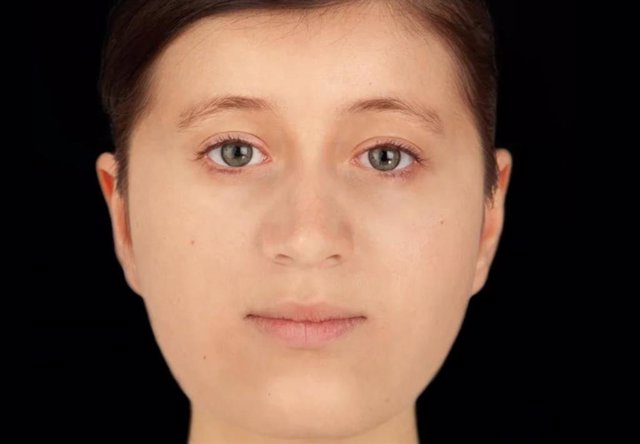June 20 () –
The face of a 16-year-old woman buried near Cambridge in the 7th century with a rare gold and garnet cross -the ‘Trumpington Cross’- it has been reconstructed after analysis of his skull.
The research includes new scientific evidence showing that the adolescent moved to England from Central Europe as a childprompting an intriguing change in their diet.
The image and artifacts from the mystery girl’s burial, discovered in 2012 by the Cambridge Archaeological Unit in Trumpington Meadows on the southern fringes of Cambridge, including her famous cross, are being unveiled in an exhibition at the Museum of Archeology and Cambridge Anthropology (MAA).
Forensic artist Hew Morrison created the image using the skull measurements of the woman and the tissue depth data of the Caucasian women.
Without DNA analysis, Morrison couldn’t be sure of her exact eye and hair colour, but the image offers a strong indication of her appearance shortly before she died.
Hew Morrison said it’s a statement: “It was interesting to see how his face developed. His left eye was slightly lower, about half a centimeter, than his right eye. This would have been quite noticeable in life.”
The new isotope analysis “You are what you eat” of the young woman’s bones and teeth, carried out by bioarchaeologists Dr. Sam Leggett and Dr. Alice Rose, and archaeologist Dr. Emma Brownlee, during PhD research at Cambridge University, also reveals that she moved to England from somewhere near the Alps, perhaps from southern Germany, sometime after he turned 7 years old.
Leggett and Rose also found that once the girl arrived in England, the proportion of protein in her diet dropped by a small but significant amount. This change came near the end of her young life, which shows that the period between his migration and burial near Cambridge was tragically short.
Dr Leggett, now at the University of Edinburgh, said: “She was quite a young girl when she moved, probably from a part of southern Germany near the Alps to a very flat part of England. He was probably not feeling well and traveled a long way to a completely unknown place., even the food was different. It must have been terrifying.”
Previous analysis indicated that the young woman had suffered from an illness but the cause of her death is unknown. She was buried in a remarkable way: lying on a wooden bed carved with the cross, gold pins, and fine clothing.
His is one of 18 bed burials discovered in the UK. Her ornate cross, combining gold and garnets (3rd quarter of the 7th century), is one of only five of its kind to have been found in Britain and identifies her as one of England’s earliest converts to Christianity and as a member of the aristocracy, if not royalty. The best known example of such a cross was found on the coffin of Saint Cuthbert.















